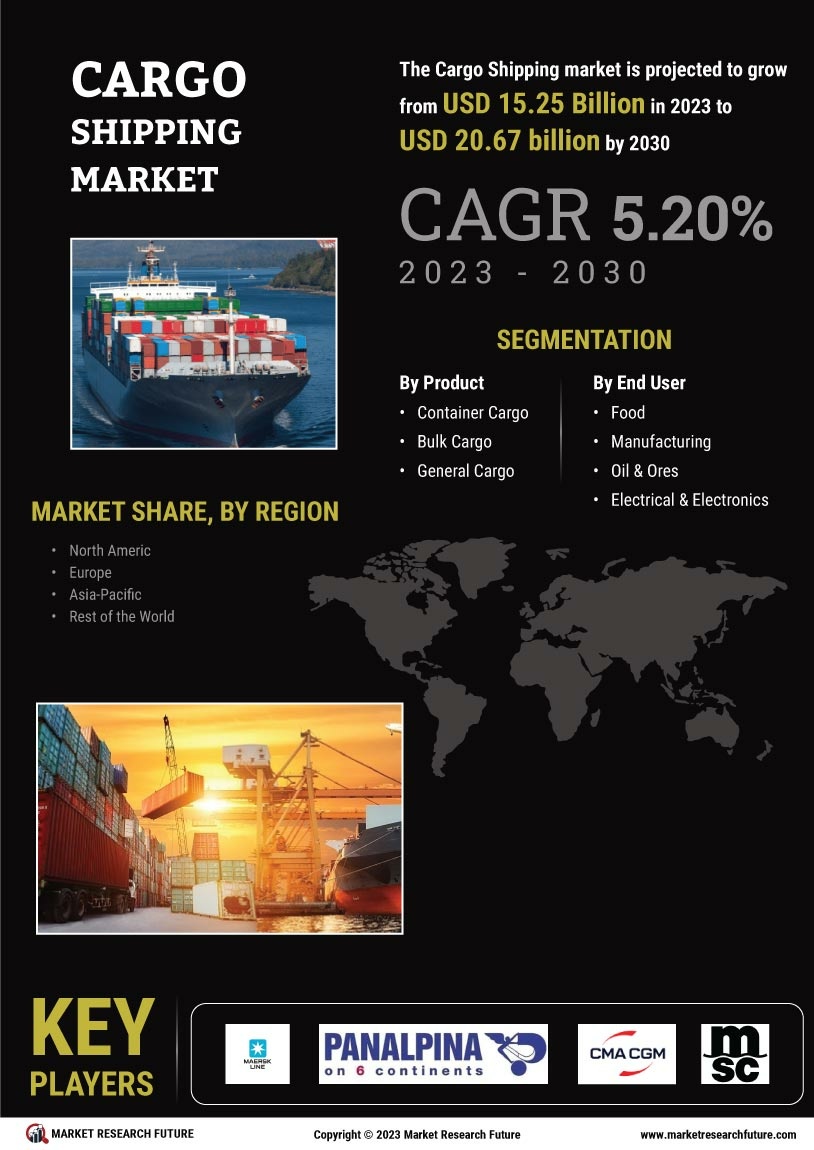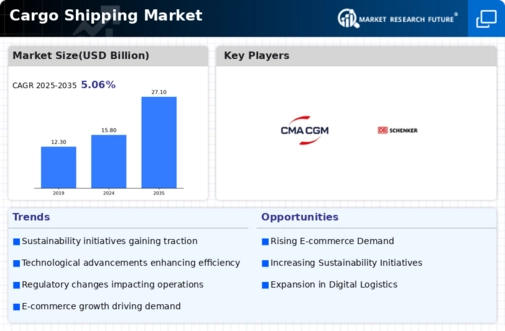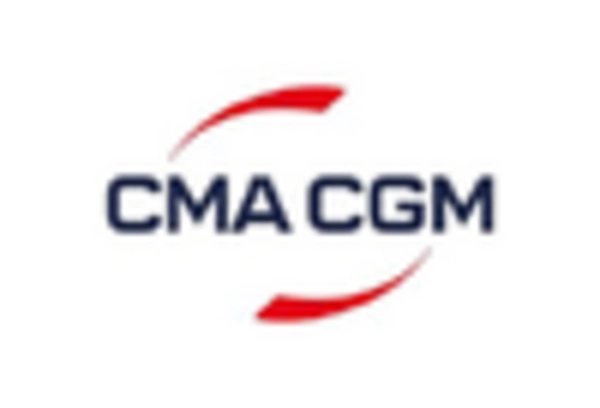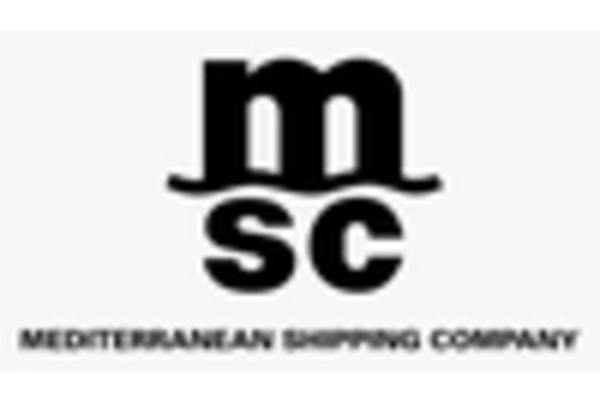E-commerce Growth
The surge in e-commerce activities has profoundly impacted the Cargo Shipping Market. As online shopping continues to gain traction, the demand for efficient and reliable shipping solutions has escalated. In 2025, e-commerce sales are projected to reach approximately 6 trillion USD, necessitating robust logistics frameworks. This growth compels shipping companies to enhance their operational capabilities, ensuring timely deliveries and customer satisfaction. The Cargo Shipping Market must adapt to the evolving needs of e-commerce, integrating advanced tracking systems and optimizing supply chains to meet consumer expectations. Furthermore, the rise of cross-border e-commerce presents additional challenges and opportunities, as companies seek to navigate international shipping regulations and tariffs. Thus, the interplay between e-commerce growth and cargo shipping is likely to shape the industry's future landscape.
Regulatory Changes
Regulatory changes significantly influence the Cargo Shipping Market, as governments worldwide implement new policies to enhance safety, security, and environmental sustainability. Recent regulations aimed at reducing carbon emissions have prompted shipping companies to invest in cleaner technologies and alternative fuels. For instance, the International Maritime Organization has set ambitious targets for reducing greenhouse gas emissions by at least 50 percent by 2050. Compliance with such regulations necessitates substantial investments in fleet modernization and operational adjustments. Moreover, changes in trade policies and tariffs can also impact shipping routes and costs, compelling companies to adapt their strategies accordingly. The dynamic nature of regulatory frameworks suggests that stakeholders in the Cargo Shipping Market must remain vigilant and responsive to ensure compliance while maintaining competitiveness.
Rising Consumer Demand
Rising consumer demand is a key driver of the Cargo Shipping Market, as the need for timely and reliable delivery services intensifies. With consumers increasingly expecting faster shipping options, companies are compelled to enhance their logistics capabilities. In 2025, the demand for express shipping services is anticipated to grow by approximately 20 percent, reflecting changing consumer preferences. This trend necessitates that shipping companies invest in advanced logistics solutions, such as real-time tracking and automated warehousing systems, to meet these expectations. Additionally, the growth of the subscription-based business model in various sectors further fuels demand for efficient shipping solutions. As consumer behavior continues to evolve, the Cargo Shipping Market must adapt to these trends, ensuring that it remains responsive to the needs of its clientele.
Technological Innovations
Technological innovations are transforming the Cargo Shipping Market, driving efficiency and enhancing operational capabilities. The adoption of automation, artificial intelligence, and blockchain technology is reshaping logistics and supply chain management. For instance, the implementation of AI-driven analytics allows shipping companies to optimize routes and reduce fuel consumption, potentially lowering operational costs by up to 15 percent. Furthermore, blockchain technology is being utilized to enhance transparency and traceability in cargo movements, thereby reducing the risk of fraud and improving trust among stakeholders. As these technologies continue to evolve, they are likely to play a crucial role in addressing the challenges faced by the Cargo Shipping Market, such as capacity constraints and rising customer expectations. The ongoing digital transformation indicates a future where technology will be integral to the industry's growth and sustainability.
Infrastructure Development
Infrastructure development plays a pivotal role in shaping the Cargo Shipping Market. Investments in ports, roads, and rail networks are essential for facilitating efficient cargo movement. In recent years, several countries have embarked on extensive infrastructure projects aimed at enhancing their logistics capabilities. For instance, the expansion of major ports has been observed, with some facilities increasing their container handling capacity by over 30 percent. Such developments not only improve operational efficiency but also reduce transit times, thereby attracting more shipping companies to utilize these upgraded facilities. Additionally, the integration of smart technologies in infrastructure, such as automated cargo handling systems, is becoming increasingly prevalent. This trend indicates a shift towards more streamlined operations within the Cargo Shipping Market, ultimately benefiting stakeholders across the supply chain.

















Leave a Comment